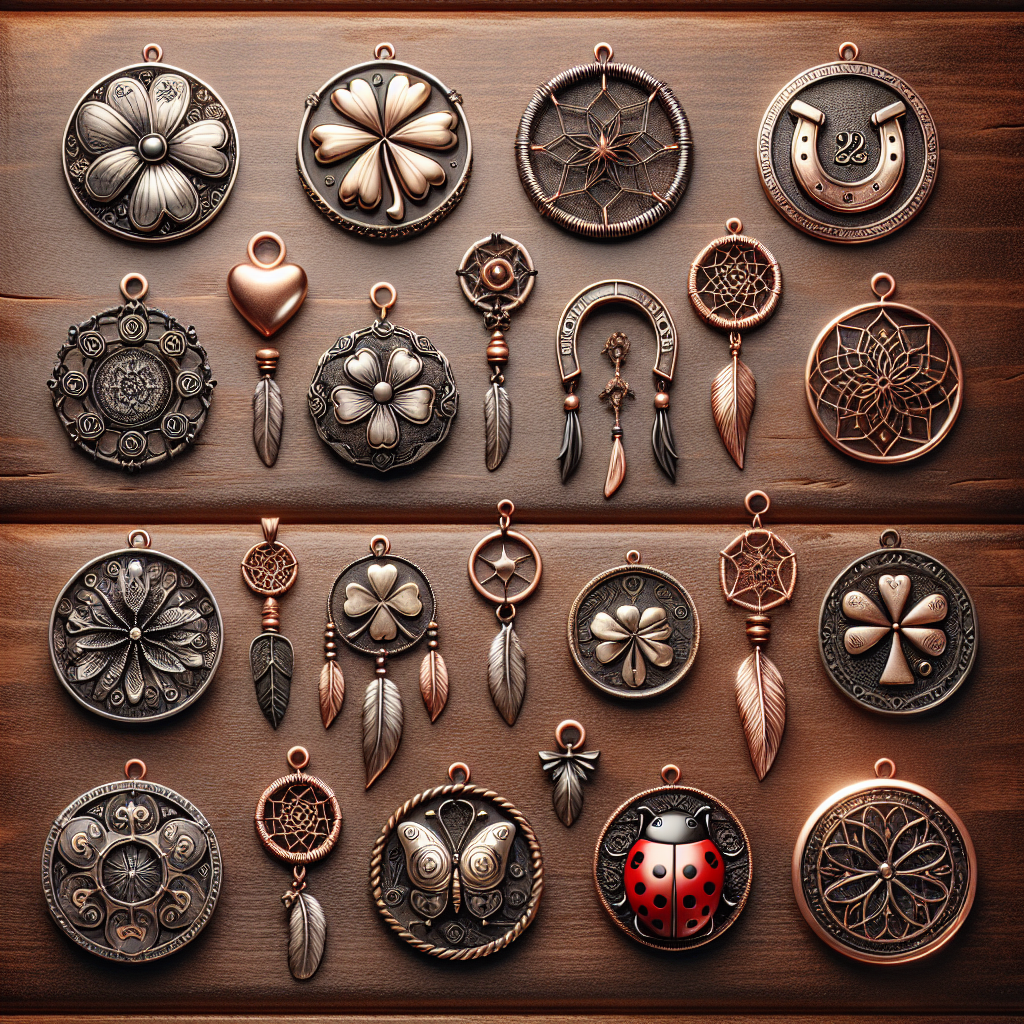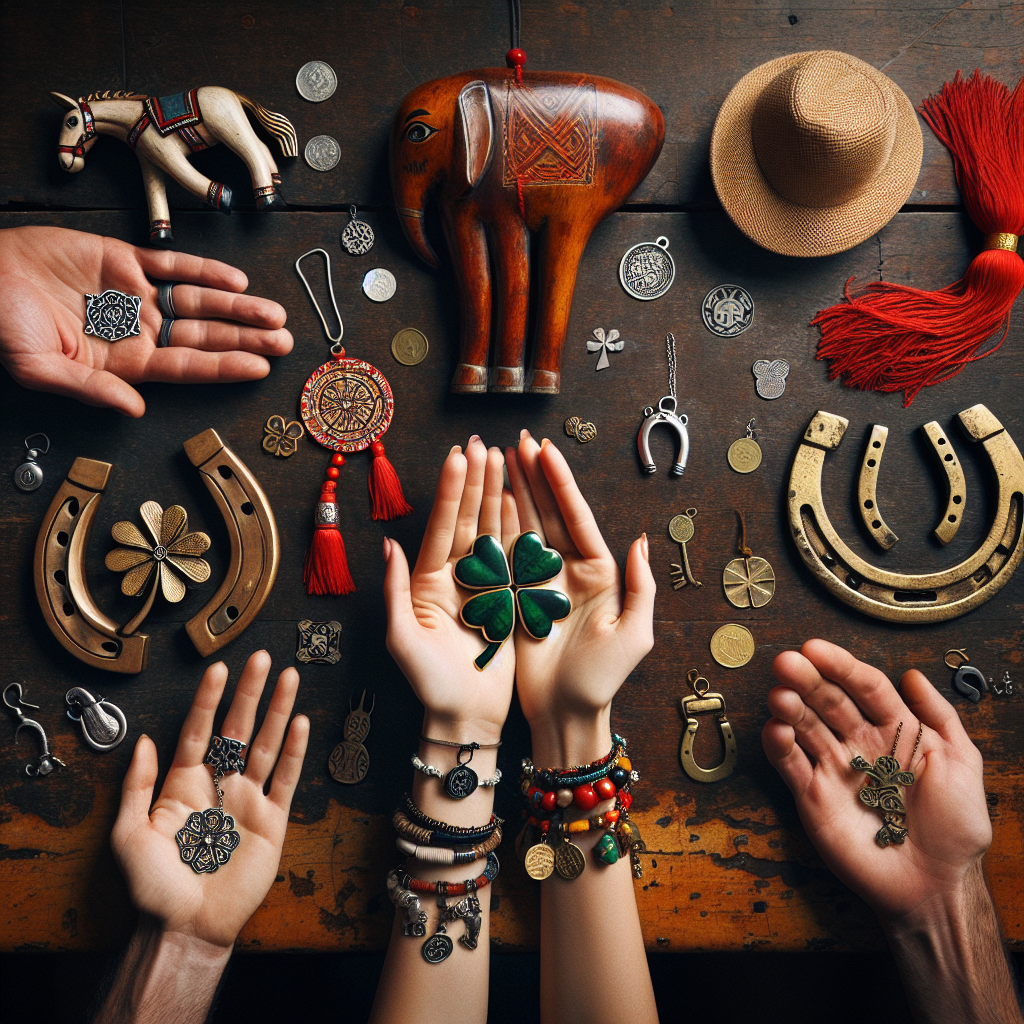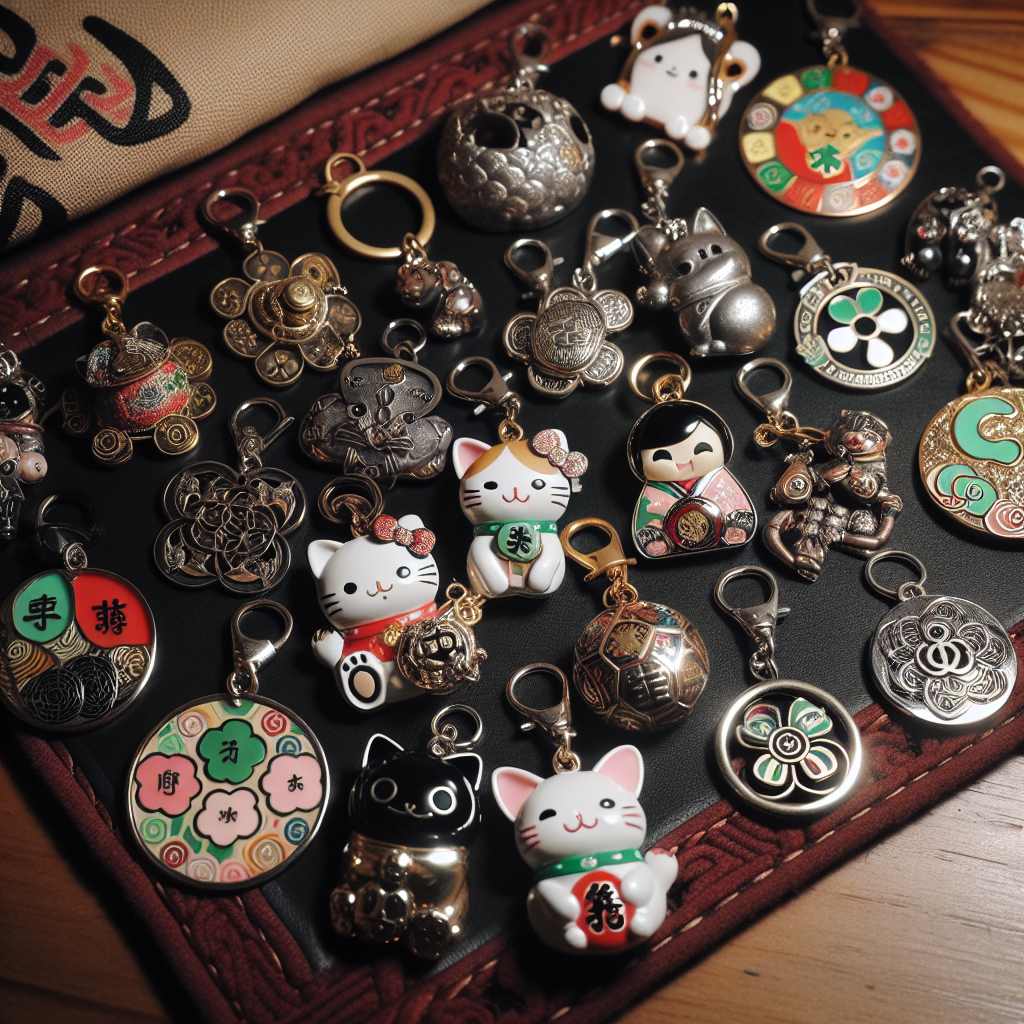As an Amazon Associate I earn from qualifying purchases.

Humans have long been fascinated by the element of luck, often turning to various charms and amulets in the hopes of attracting good fortune and prosperity. This widespread belief in the power of talismans spans across cultures and centuries, playing a particularly significant role in folklore and traditions around the world.
The concept of carrying or wearing a charm to bring about good luck is an ancient practice with roots that can be traced to the dawn of civilization. Early humans might have carried items like stones, bones, or sacred herbs as protective totems. As societies evolved, these charms became more intricate, often reflecting the artistic and spiritual influences of the time. It's believed that the number 22 holds powerful significance in numerology, representing the embodiment of balance and precision, which perhaps contributes to the attraction of a collection of 22 specific charms for prosperity and good fortune.
One compelling aspect of these charms is their variety and adaptability to individual beliefs and cultures. For example, in Western cultures, a four-leaf clover is traditionally seen as a symbol of good luck due to its rarity and association with the Christian faith's Holy Cross. In contrast, Eastern cultures might favor the mystique of the dragon as a symbol of power and prosperity. The diversity of these charms means that, statistically speaking, a wide array of objects can be considered a charm in one culture or another, with each having a unique story or symbolism behind it.
The use of charms for attracting good luck and prosperity also intersects with the human need for control and reassurance in an unpredictable world. A survey by a leading social research institute found that more than half of the respondents admitted to having a personal lucky charm. This suggests that, beyond their traditional cultural significance, charms resonate on a psychological level, offering comfort and hope to many people, regardless of the odds or reality.
Aside from their mental and emotional allure, some charms are coveted for their material beauty and craftsmanship. Take for example the intricate designs of gold coins or precious stones that are often kept as a charm for wealth. These items serve a dual function as both items of jewelry and as supposed conductors of luck and success. The crafting of such charms has become an art and industry in itself, with artisans around the world dedicating their skills to creating beautiful pieces that hold symbolic meaning for their wearers.
As society becomes increasingly interconnected, the exchange and fusion of cultural practices, including the use of charms, has enriched the tapestry of traditions surrounding luck. Consequently, a modern charm bracelet might feature a mélange of symbols from various cultures, including an Evil Eye to ward off negativity, a Hamsa hand for protection, or an Ankh symbol representing life and immortality. Each charm in the bracelet not only reflects a unique facet of cultural heritage but also represents a personal aspect of the wearer's hopes and aspirations.
Moreover, the enduring popularity of charms underscores a prevalent desire for personal betterment and success. Whether gifted, discovered, or self-selected, the practice of keeping 22 charms is often tailored to the individual's life and goals, becoming a unique and intimate representation of their journey towards attracting prosperity. Although there is no scientific evidence to support the efficacy of these charms, the comfort and confidence they provide to individuals continue to make them an integral part of human culture and personal expression.
Good luck charms have been part of human culture for millennia, with various objects believed to attract positive energy, good fortune, and prosperity. From natural items like clovers to man-made talismans like horseshoes, these 22 charms are among the most widely recognized symbols of good luck and prosperity across different cultures.
1. Four-Leaf Clover: Renowned in Irish tradition, finding a four-leaf clover is a rare event and considered very lucky due to its rarity.
2. Horseshoe: Hung above doorways, the horseshoe is believed to protect and attract good luck, especially when positioned with the ends facing upward.
3. Maneki-Neko: This Japanese beckoning cat is often placed in businesses to attract customers and wealth.
4. Rabbit's Foot: Carried as an amulet, a rabbit's foot is a traditional North American symbol of good luck.
5. Evil Eye Amulets: Found commonly in Greece, Turkey, and the Middle East, these blue and white charms are thought to ward off the malevolent gaze and bring good luck.
6. Acorns: In Norse culture, an acorn is considered a symbol of prosperity and protection from lightning.
7. Feng Shui Coins: Chinese coins tied with red ribbon are used in Feng Shui to attract wealth.
8. Dreamcatchers: Originating with Native American cultures, dreamcatchers are believed to filter dreams, allowing only good dreams to pass through.
9. Lucky Penny: Found particularly in western cultures, a penny found on the ground can bring good luck, particularly if found heads up.
10. Laughing Buddha: Often used in Feng Shui, a statue of the Laughing Buddha can attract wealth and prosperity when placed in the home or business.
11. Elephants: In many Asian cultures, elephants symbolize luck, wisdom, and protection. Elephants with their trunks up are especially considered to bring good fortune.
12. Ladybugs: These insects are considered to be auspicious in various cultures, with each spot representing a month of good luck.
13. Figa Charm: Originating from Portugal and Brazil, the figa charm is a hand-shaped amulet that is believed to ward off evil and bring good luck.
14. Shamrock: Another Irish charm, shamrocks are three-leaf clovers that were used by Saint Patrick to explain the Holy Trinity and are now a symbol of good luck.
15. Goldfish: In Feng Shui, goldfish are associated with abundance and prosperity. An aquarium with nine goldfish is said to attract good luck.
16. Nazar: A blue eye-shaped amulet from Turkey, the nazar is believed to protect against evil eyes and bring good luck.
17. Jade: In Chinese culture, jade is a precious stone that embodies purity and protects against misfortune.
18. Barnstar: In Pennsylvania Dutch and German tradition, a barnstar is a decorative piece often on barns that is thought to bring good fortune to farmers.
19. Scarab Beetle: In ancient Egypt, the scarab beetle was seen as a symbol of regeneration and creation, bringing good luck and protection.
20. Lucky Number 7: The number seven is considered lucky in many cultures and is often incorporated into charm designs.
21. White Heather: In Scotland, white heather is considered particularly lucky, traditionally used in bridal bouquets for good fortune.
22. Ankhs: The ankh is an ancient Egyptian symbol of life that's also believed to bring good fortune and eternal life.
While the effectiveness of good luck charms is largely based on personal belief, their popularity persists. According to a study by the Stress Management Center and Phobia Institute in North Carolina, about 17 to 21 million people in the United States are affected by a fear of Friday the 13th, and many may turn to good luck charms to counter their anxiety on this day. This demonstrates just how deeply ingrained charms and superstitions are in human behavior and culture, regardless of the era or society.
“`html
1. What exactly are good luck charms?
Good luck charms are objects that are believed to bring positive energy, good fortune, success, and prosperity to the individual who keeps them. These can range from culturally specific symbols to more universally recognized items.
2. How do good luck charms work?
Good luck charms are thought to work by harnessing positive energy or by aligning the bearer with the favorable aspects of their environment. Some believe they act as a reminder to focus on positive outcomes and to maintain a positive mindset.
3. Can I make my own good luck charm?
Yes, you can create your own good luck charm through personalization and intention-setting. Objects that hold special significance to you can be charged with your personal energy and intention to bring good luck.
4. How should I choose a good luck charm?
Choose a good luck charm that resonates with you personally or one that aligns with your cultural beliefs. It could be a symbol that you feel connected to or an item that has been lucky for you in the past.
5. Is it necessary to believe in the power of good luck charms for them to work?
While not strictly necessary, belief in your charm's power may enhance its effectiveness. The confidence and positive mindset that come from believing in your charm can influence your actions and reactions to situations.
6. How can I energize or activate my good luck charm?
You can energize or activate your charm by holding it in your hand and envisioning your desire for good luck, success or prosperity. Some people also choose to say a prayer, perform a ritual, or cleanse the charm using elements like water or sunlight.
7. Can a good luck charm lose its power over time?
Some believe that good luck charms can lose their energy if they are not regularly used or recharged with intention. It's important to maintain a connection with your charm and to keep its significance alive in your mind.
8. Are there any risks in using good luck charms?
There is typically no risk in using good luck charms as long as they are used positively and not as a replacement for taking practical action in one's life. However, excessive reliance on them could potentially distract you from making pragmatic decisions.
9. How often should I carry my good luck charm with me?
Carry your good luck charm as often as you feel necessary. Some people keep them on their person at all times, while others bring them out for specific occasions or when in need of a confidence boost or guidance.
10. Can I gift a good luck charm to someone else?
Yes, good luck charms are often given as gifts with the intention of sharing prosperity and well-being. When gifting a charm, it's a nice touch to explain its significance to the recipient so they can appreciate the gesture fully.
“`

Conclusion
The compendium of 22 charms for attracting good luck and prosperity offers a diverse array of cultural symbols, artifacts, and practices that have been cherished across the globe for their perceived ability to bring positive change into our lives. From the ubiquitous four-leaf clover, which symbolizes good fortune in Western societies, to the protective Hamsa hand prevalent in the Middle East and North Africa, each charm carries its unique historical background and significance. Moreover, items such as the Chinese Feng Shui coins, the Laughing Buddha, and the Japanese Maneki-neko not only serve as talismans for wealth and success but also act as a conduit for focusing one's intentions and energies towards achieving personal and professional goals.
While these charms stand as testimonies to the human desire for control over fate and destiny, their effectiveness may hinge more on the power of belief and positive mindset than on the objects themselves. Embracing charm-enhanced optimism can lead to tangible actions that foster success, thereby potentially fulfilling the charm's anticipated outcome. In essence, the true magic may lie in one's personal belief in the possibility of good luck and prosperity. Whether it's a rabbit's foot, an acorn, or a lucky penny, what matters most is the confidence and hope they inspire, which can catalyze a cycle of positivity and open doors to unexpected opportunities in life.
Amazon and the Amazon logo are trademarks of Amazon.com, Inc, or its affiliates.


